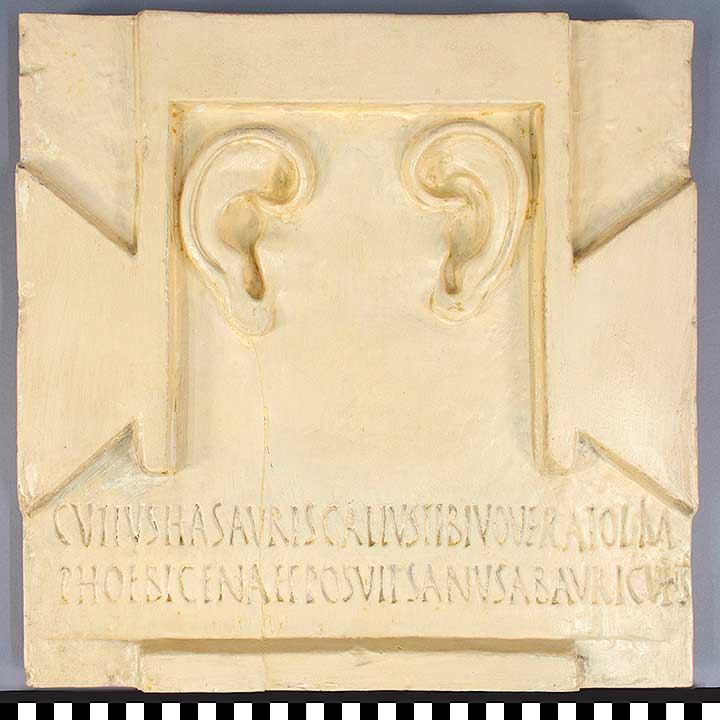Plaster Cast: Tabula Ansata, Votive Ansate Tablet
1900.12.0090
Detailed Images
Basic Information
| Artifact Identification | Plaster Cast: Tabula Ansata, Votive Ansate Tablet (1900.12.0090) |
|---|---|
| Classification/ Nomenclature |
|
| Artist/Maker | Emile Gillieron & Fils, Athens. |
| Geographic Location | |
| Period | Early Roman Empire |
| Date | 1st century BCE to 1st century CE |
| Culture | Roman |
| Location | Not on Exhibit |
Physical Analysis
| Dimension 1 (Length) | 36.3 cm |
|---|---|
| Dimension 2 (Width) | 35.8 cm |
| Dimension 3 (Depth) | 3.9 cm |
| Weight | 4333 g |
| Measuring Remarks | Under Review |
| Materials | Plaster |
| Manufacturing Processes | Cast |
Research Remarks
| Description | Marble relief of two human ears in the upper corners of the field reflecting their position on the sides of the head. There are two trapezoidal handles on each side of the ears. |
|---|---|
| Published Description | Under Review |
| Bibliography | CIL III, Sup. 1, 1311, no. 7266 = Corpus Inscriptionum Latinarum, vol. III, Northern and Eastern Provinces of the Empire (including Greece), Supplement 1, 1311, no. 7266. |
Artifact History
| Credit Line/Dedication | Classical Museum Purchase |
|---|---|
| Reproduction | yes, Original in the Athens National Archaeological Museum no. 1428. |
Contact
All information about our collection is constantly reviewed and updated. Please contact Dery Martínez-Bonilla, Registrar, if there is any information you are looking for that isn't currently online.
